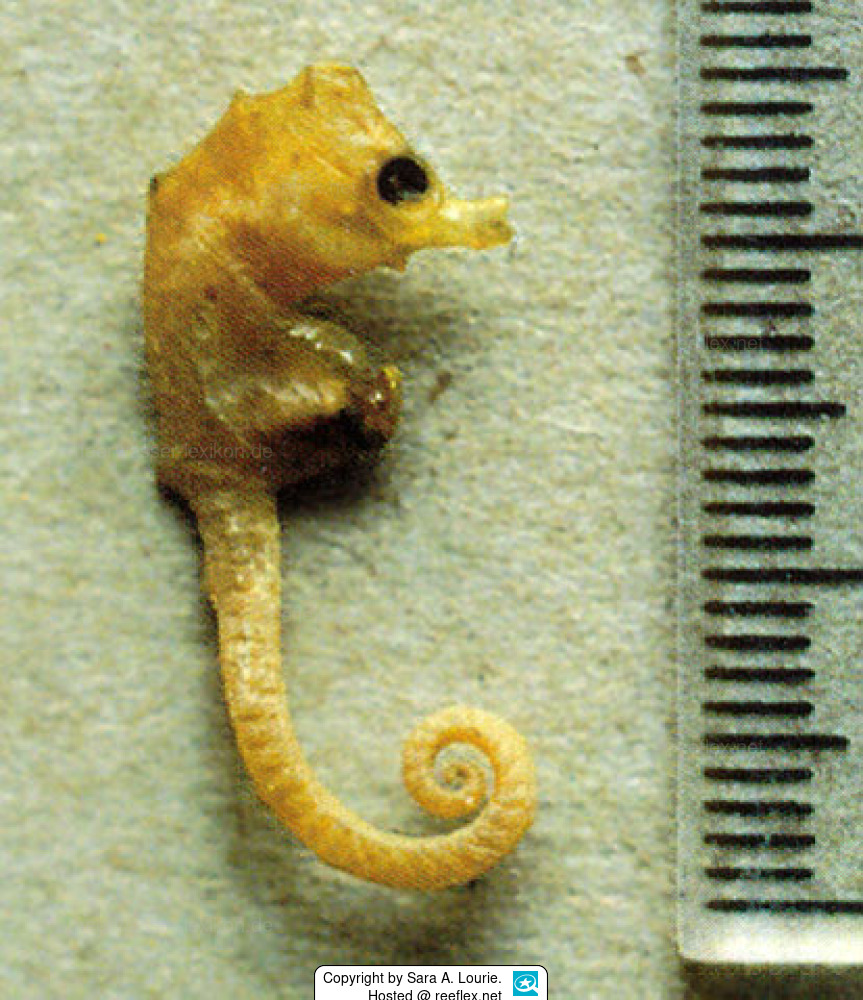Info
Gomon, 1997
Hippocampus minotaur is a rare seahorse known from very few specimens collected relatively deep waters off south-eastern Australia.
The Bullneck Seahorse was found on the continental shelf and was trawled from fine sand or hard bottom, possibly in association with azooxanthellate gorgonian corals.
Depth: Depth range 64 - 100 meters.
Classification: Biota > Animalia (Kingdom) > Chordata (Phylum) > Vertebrata (Subphylum) > Gnathostomata (Superclass) > Pisces (Superclass) > Actinopteri (Class) > Syngnathiformes (Order) > Syngnathidae (Family) > Hippocampinae (Subfamily) > Hippocampus (Genus) > Hippocampus minotaur (Species)
Feeding intake.
The fish take a long time to eat at the beginning, before the food is taken up, a close inspection is carried out. After acclimatisation, the offered frozen food is eaten without problems. It should be noted that wild-caught fish behave differently than offspring when it comes to food intake. In the case of offspring, the size of the fish purchased also plays a role in the choice of food.
You can download the minimum requirements for keeping seahorses (in accordance with EC Regulation 338/97) from the Federal Agency for Nature Conservation as a PDF here: https://meerwasser-lexikon.de/downloads/BfN_Mindestanforderung_haltung_seepferdchen_hippocampus.pdf
Hippocampus minotaur is a rare seahorse known from very few specimens collected relatively deep waters off south-eastern Australia.
The Bullneck Seahorse was found on the continental shelf and was trawled from fine sand or hard bottom, possibly in association with azooxanthellate gorgonian corals.
Depth: Depth range 64 - 100 meters.
Classification: Biota > Animalia (Kingdom) > Chordata (Phylum) > Vertebrata (Subphylum) > Gnathostomata (Superclass) > Pisces (Superclass) > Actinopteri (Class) > Syngnathiformes (Order) > Syngnathidae (Family) > Hippocampinae (Subfamily) > Hippocampus (Genus) > Hippocampus minotaur (Species)
Feeding intake.
The fish take a long time to eat at the beginning, before the food is taken up, a close inspection is carried out. After acclimatisation, the offered frozen food is eaten without problems. It should be noted that wild-caught fish behave differently than offspring when it comes to food intake. In the case of offspring, the size of the fish purchased also plays a role in the choice of food.
You can download the minimum requirements for keeping seahorses (in accordance with EC Regulation 338/97) from the Federal Agency for Nature Conservation as a PDF here: https://meerwasser-lexikon.de/downloads/BfN_Mindestanforderung_haltung_seepferdchen_hippocampus.pdf







 Dr. Sara A. Lourie, Australien
Dr. Sara A. Lourie, Australien

























































